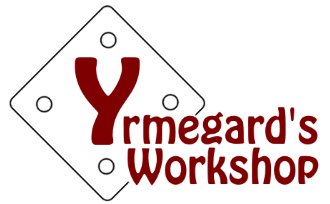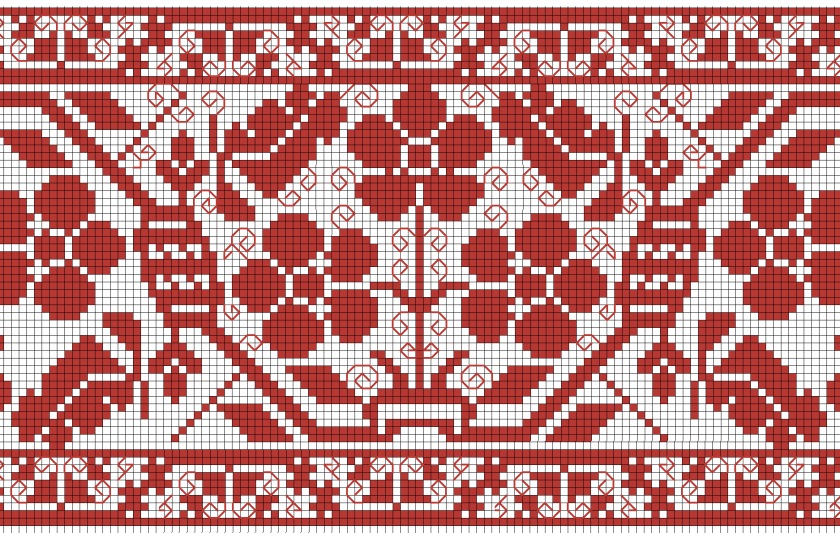The pattern is drawn from a chalice cover dated to around 1600, of either Italian or German origin. The cover is currently in the collection of the German National Museum in Nuremberg. Photos of the item can be found in the Bildindex picture collection: the whole chalice cover, enlarged section.
The pattern consists of identical upper and lower narrow borders and the central part. The height of narrow borders is 10 stiches, the width of the pattern repeat is 44 stitches. Each section of the main pattern is a trapezoid with base height of 48 stitches, 29 stitches wide on a narrow side and 103 stitches wide on the opposite side. As the original was most probably embroidered without counting the threads, the same elements look different in different pattern repeats. For this pattern here, the elements are therefore slightly modified to fit all of them into the standardised shape and yet to keep the general feel of the pattern as close to the original as possible.
In addition to main elements in cross stitch, the original includes thin stitched lines embroidered presumably using Holbein stitch. Narrow borders are more or less uniform in the sense of where these additional lines are sitched, the additions to the segments of the main pattern are all different. In the pattern below, the narrow borders include the thin lines drawn as close to the original as possible. One segment of the main pattern is also filled with curls in roughly the same style as the original embroidery, but the location of the thin lines does not always correspond to actual embroidery.
The overall view of the border is shown below, and on the following pages, on large schemes, one whole segment and the border between the segments are given, together with the upper and lower borders.
Download pattern as pdf.

